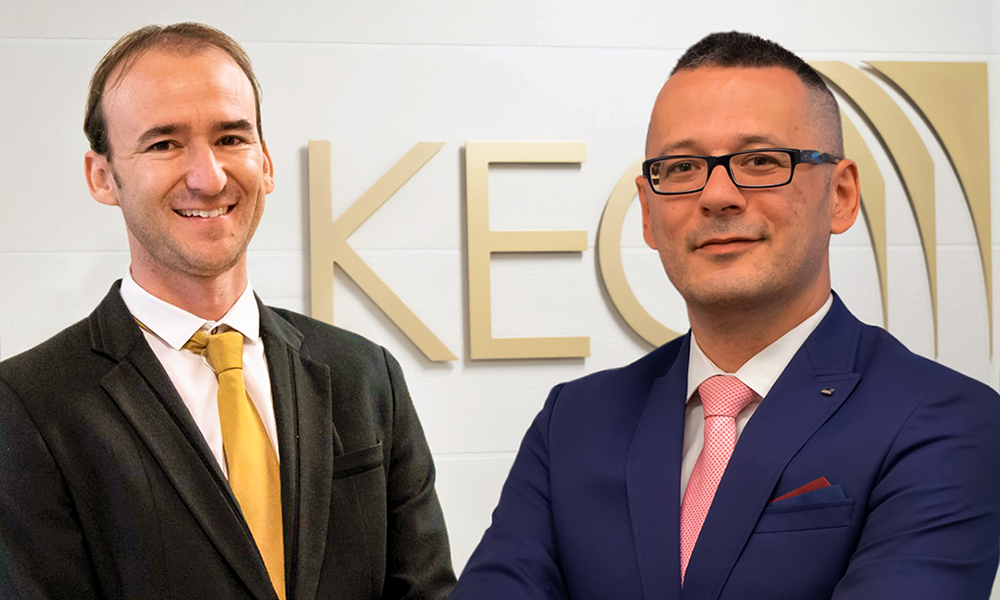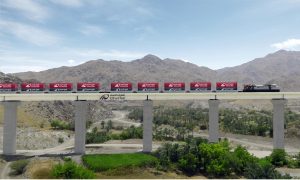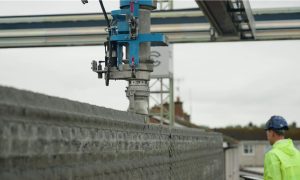Case Study: How KEO achieved 90% time-savings leveraging BIM360 as their Common Data Environment
Damir Jaksic and Juan Tena Florez discuss how KEO’s proactivity in adapting to a digital future has helped it continue to work smoothly during a lengthy remote working period

Having been in business in the GCC region for more than 50 years, KEO International Consultants has established a reputation as being an end-to-end specialist in creating the built environment, through its innovative spirit when it comes to adopting and incorporating construction technology. Through its allied specialist firms: InSite (for planning, urban design and landscape architecture); and C-Quest (quantity surveying), the consultancy has become known as a pioneer in the use of BIM software, including the latest iteration of the technology, BIM360.
With projects across 11 international markets, the company has contributed to many ambitious projects around the world, and as a globally ranked firm, it has offices in seven different countries and draws on the expertise of professionals from more than 60 nations. As such, the concept of working remotely from anywhere on the planet has become almost commonplace across the organisation.
Not only has the firm been able to deliver projects that have been meticulously designed and planned, utilising BIM360, but its implementation of a digital strategy has empowered its workforce to adopt working remotely as a matter of course.
“Over the last few years, KEO’s IT Digital Strategy pivoted towards a simple goal – empower our digital worker to be able to securely and effectively collaborate and communicate anytime, anywhere, on any device, within or outside the KEO organisational boundaries,” says Damir Jaksic, Chief Information Officer at KEO International Consultants.
As a result of this far-sighted digital strategy, the company has been better placed than most when governments the world over ordered people to go into lockdown and to work from home. While other consultancies have had to scramble to set up networks and systems to ensure their employees could continue to operate productively, Jaksic says that KEO found the transition to be almost seamless.
“A number of solutions have been in place to facilitate this arrangement, which has seen our capabilities to deliver for our clients practically unaffected by the current situation.”
The challenge
With foundational technologies such as Autodesk BIM360, as well as an array of other tools used by architects, engineers and construction services, being cloud based since 2016, Jaksic says that all the ingredients were in place to ensure that the transition to working remotely went smoothly.
“This product portfolio was enhanced to include digital tools, such as design review and clash detection in 2016. The circumstances that we’re in right now have revealed a stark gap between the technology ‘haves’ and the ‘have nots’, but we were ready,” he adds.
“Finding the required information, such as the right files, models and drawings has become more efficient thanks to using BIM360 Docs as our common data environment. We’ve experienced and calculated an improvement of about 83% in terms of time savings, in that regard.”
However, despite the firm and its employees being ready to work remotely, the team heading up the transition did run into a few obstacles while preparing staff for the adaptation, as Juan Tena Florez, Regional Digital Design Manager at KEO International Consultants, explains.
“The main challenge to adopting remote working was certainly related to the home internet speeds and the connectivity that each user has at home. Most of the solutions are based on VPN or remote desktop tools, which are slower than when compared to working on office servers. That was mitigated by using BIM360 and having a license borrowed from the server.
This is what we have been using while working remotely. We were very early adopters of BIM360 and moving from office to remote working was easily implemented,” Tena says.
Jaksic adds that KEO recognised very early on that the global trends of integrated project delivery meant that organisational boundaries would be blurred. As such, the firm was quick to understand that a cloud-based platform like Autodesk’s BIM360 would not only offer a solution to not only address this problem, but that it would help them lead beyond the drift.
“By using BIM360, our in-house or extended teams delivering to clients have had the ability to collaborate on projects from different office locations, across organisations, and this includes the remote workforce. We source the best talent for our clients, and right now we have contributors from as far afield as New Zealand, across Europe and over to the West Coast of the USA. Digitalisation is the only way to achieve this, and we are constantly deploying new online capabilities to enhance the efficiency and accuracy of our deliverables,” he asserts.
Jaksic points out that while technology has been crucial to KEO’s continued success during this period, the main ingredient has been the business processes and people, who have adjusted to catch-up with the technology.
He stresses that while business leaders must articulate strategies that are inspired by the capabilities of digital technology, such assertions must come with a plan to handle legacy systems and legacy ways of working, which are often accompanied by operational deficiencies and resistance to change.
“To me, attacking this complexity has been my biggest challenge for many years, and it is never likely to end. We are winning though,” he asserts.
The solution
More than three months into the remote working process and it is safe to say that the evidence is clear that the impact on productivity from a technical aspect has been negligible. With employees following internal and legislative guidelines, the transition to remote working took place without issues, the KEO duo say.
While there was an impact felt on the human side, with employees coping with an unprecedented disruption to normal life, and a huge amount of uncertainty, both Jaksic and Tena state that the company’s decision to switch to BIM360 was vital to the continued smooth operation and delivery of its projects.
“As we have been using BIM360 before working remotely from home, the collaboration and communication between teams didn’t change much as we didn’t change the way we work at the office, cross-office, or with our external partners, consultants and clients,” says Tena.
“Now, given the current situation, teams are seeing more benefits from using cloud tools like BIM 360 to enable them to work seamlessly from anywhere, anytime, and on any device. For instance, BIM360 Docs has allowed us to better collaborate and securely share data with external stakeholders, saving us more than 90% of the time it would normally take to do so in other disconnected online platforms.”
Furthermore, he adds that Autodesk’s support in upskilling KEO’s teams was vital to their success.
“Autodesk’s support in upskilling our teams by providing awareness sessions, adoption accelerators, or other specific related training topics has been remarkable since 2018, when we joined them as one of our key partnerships. We have seen a big impact on how our teams work more effectively, while making the most of the Autodesk software portfolio.”
Success
With the adoption of these technologies has come major gains to productivity, with Jaksic explaining that time to transmit information to outside parties has increased multi-fold, while quality has improved too.
“With information at our fingertips, we use automated workflows to validate quality, and once that is done, it is transmitted to third parties. This whole process is workflow driven and automated. We also oversee this process on a project or company-wide level. This is just one example of many, where implementing the BIM360 can help.
“However, it is my firm belief that tomorrow’s leaders need to push beyond productivity and its associated operational efficiencies and nurture creativity, as it is essential to our competitive differentiation,” he states.
“BIM360 eco-system helps us to automate mundane tasks, providing a platform to collaborate, as well as a platform to recognise and suggest trends, AI-driven mitigation and other productivity related functionalities. All these help us to apply our creativity with an impact.”
Tena adds that KEO has used BIM since 2009, and since then its use has grown extensively within the company, regardless of client or authority requirements. He relates that when he joined the company in 2016, around 60% of the projects KEO worked on utilised BIM. That number is now closer to 95% across all projects. BIM360 began to be used in 2016, with a small team of about 25 people piloting the project, he adds. That figure has grown over the intervening years to currently reach 500 plus people, who work using BIM360 Docs and BIM360 Design.
Jaksic reveals that KEO is in the last phase of its next-gen transformation programme that outlines the company-wide transformation strategy of KEO, which has seen the firm process more than 200 terabytes of data.
“While we have used BIM360 on most of our projects, upon completion of our Next-Gen Transformation programme, the BIM360 ecosystem has become the de-facto collaboration environment for all our projects,” he says, providing an exciting insight into the next stage of KEO’s evolution.
“Despite the huge amount of data and files in BIM360, users can find the latest version of any design model or drawing very quickly. BIM360 Docs automatically keeps track of the file history by managing the versioning; thus allowing quick fetching of data and saving KEO an estimated 90% of the time previously spent on manual and mundane document management tasks,” he adds.
As he signs off, Jaksic states that one piece of advice that he would share with the industry, if they would wish to learn something from KEO’s digital journey, is that collaboration and inclusivity is key.
“Focus on a task, whatever that may be, that can provide significant outcomes in a year. This will, in turn, focus on the one process that matters the most – this process is likely the most essential to delivery of your customer value proposition. Do it right, and then repeat it. While you’re at it, champion inclusivity and collaboration. micro-organisations within organisations create new intellectual properties that can open up favourable strategic options,” he concludes.
You can find out more about how KEO and Autodesk are collaborating on remote working here.























